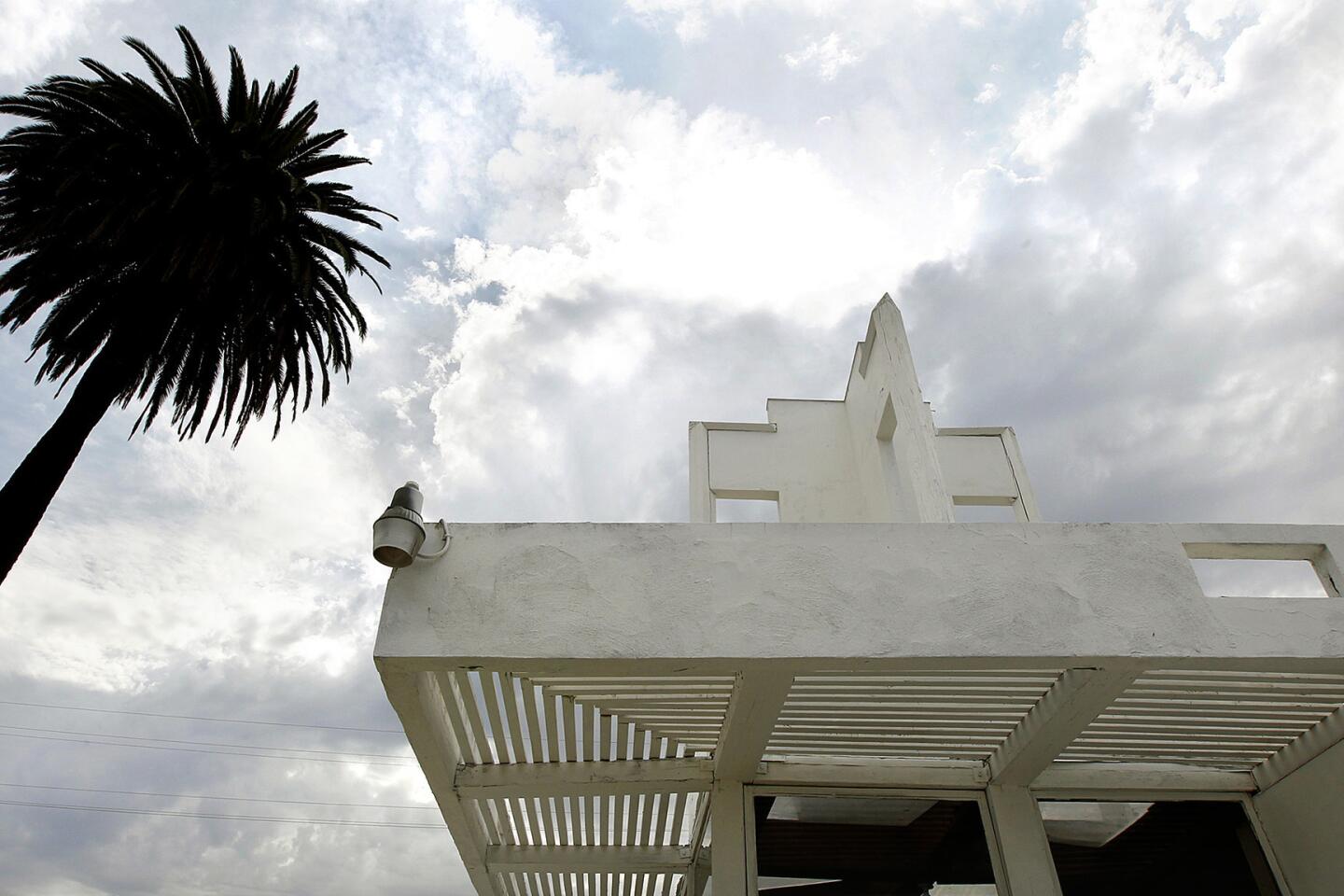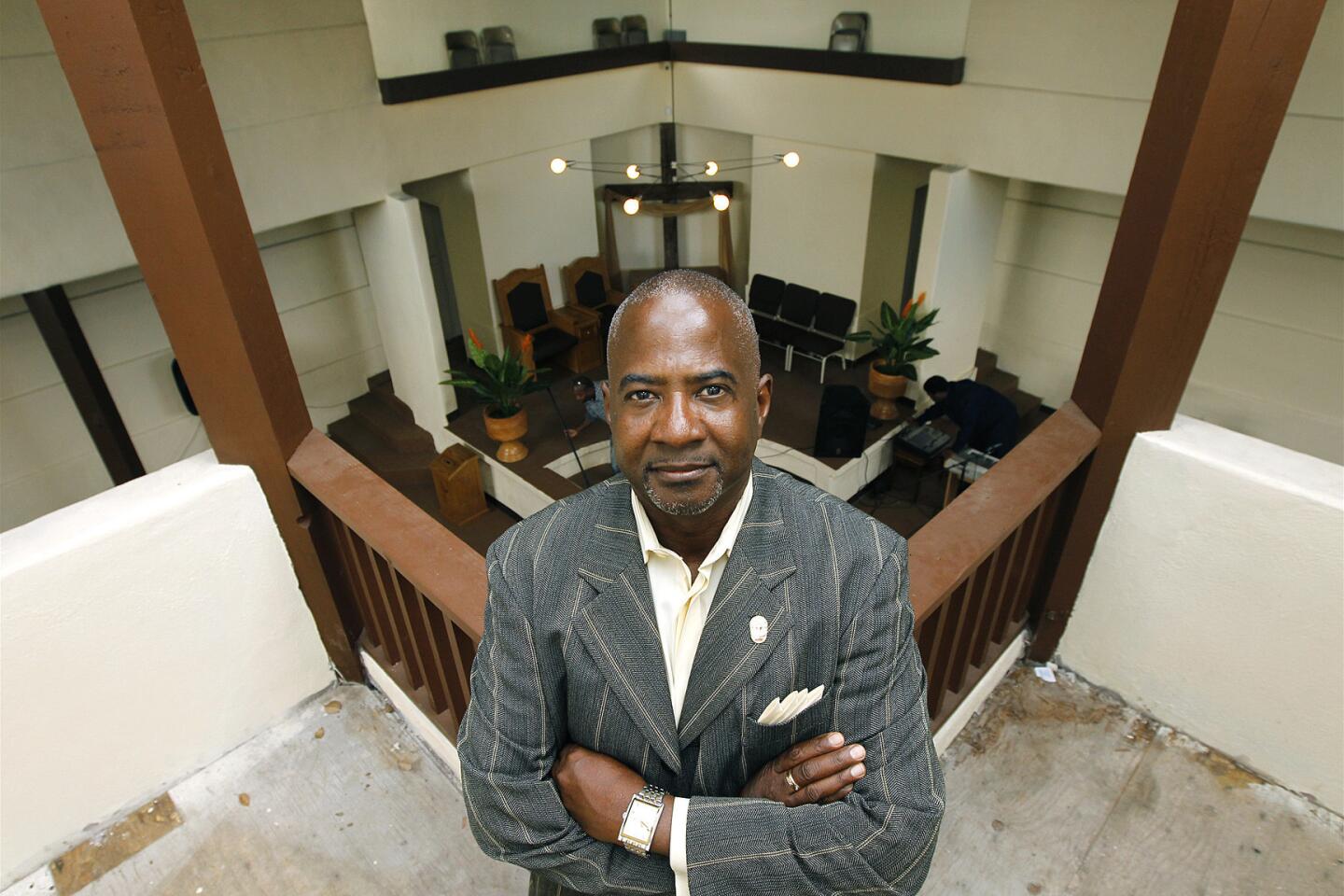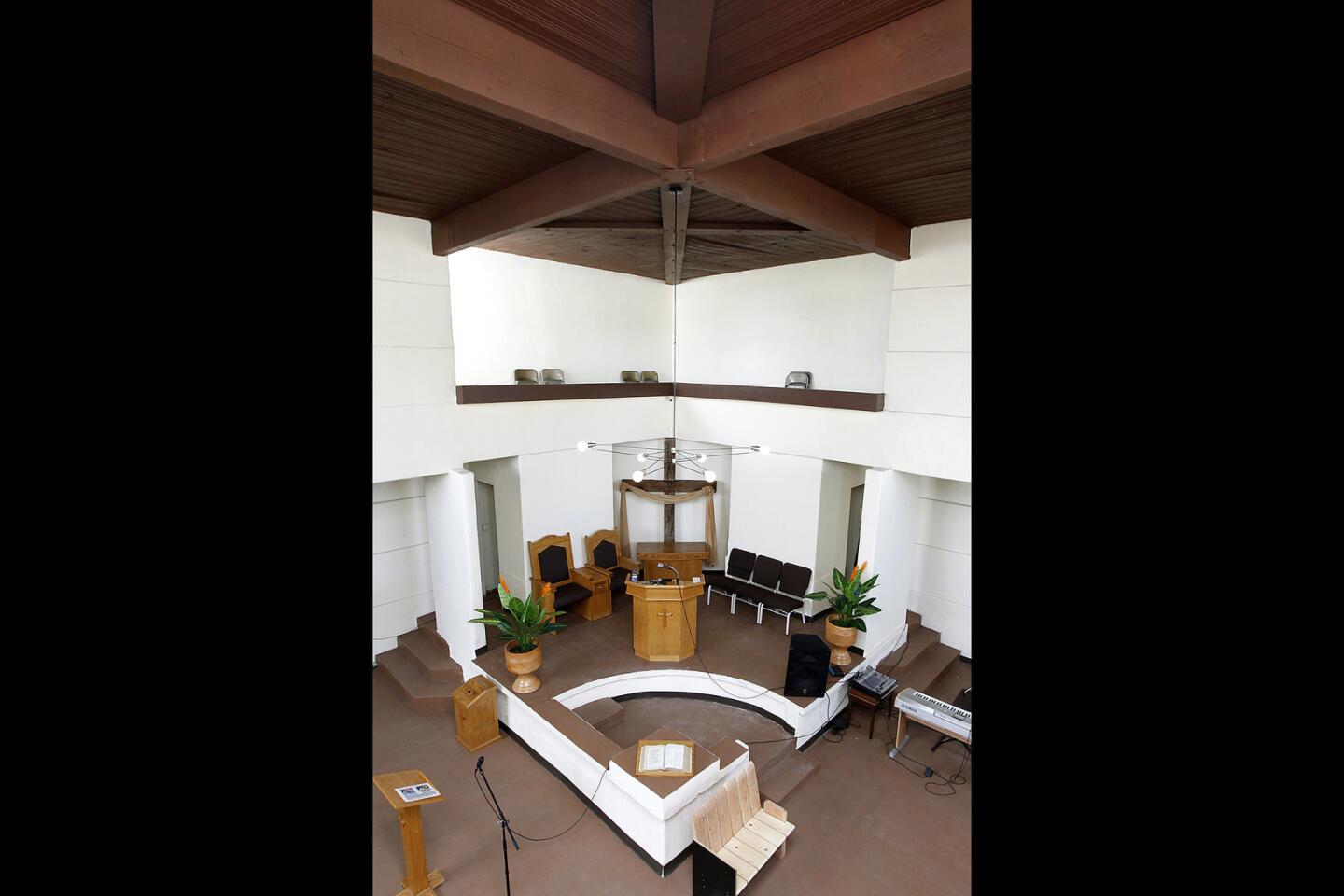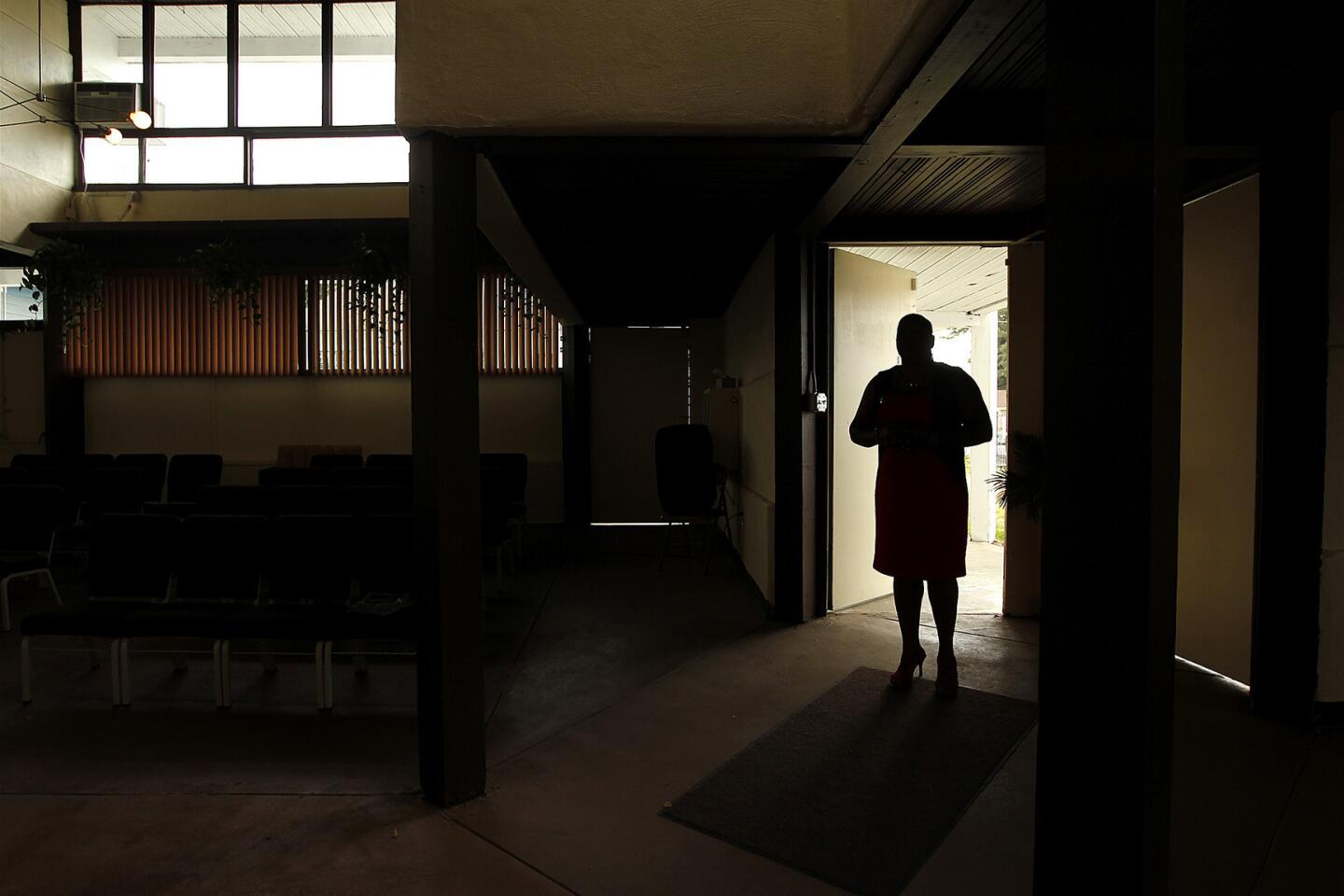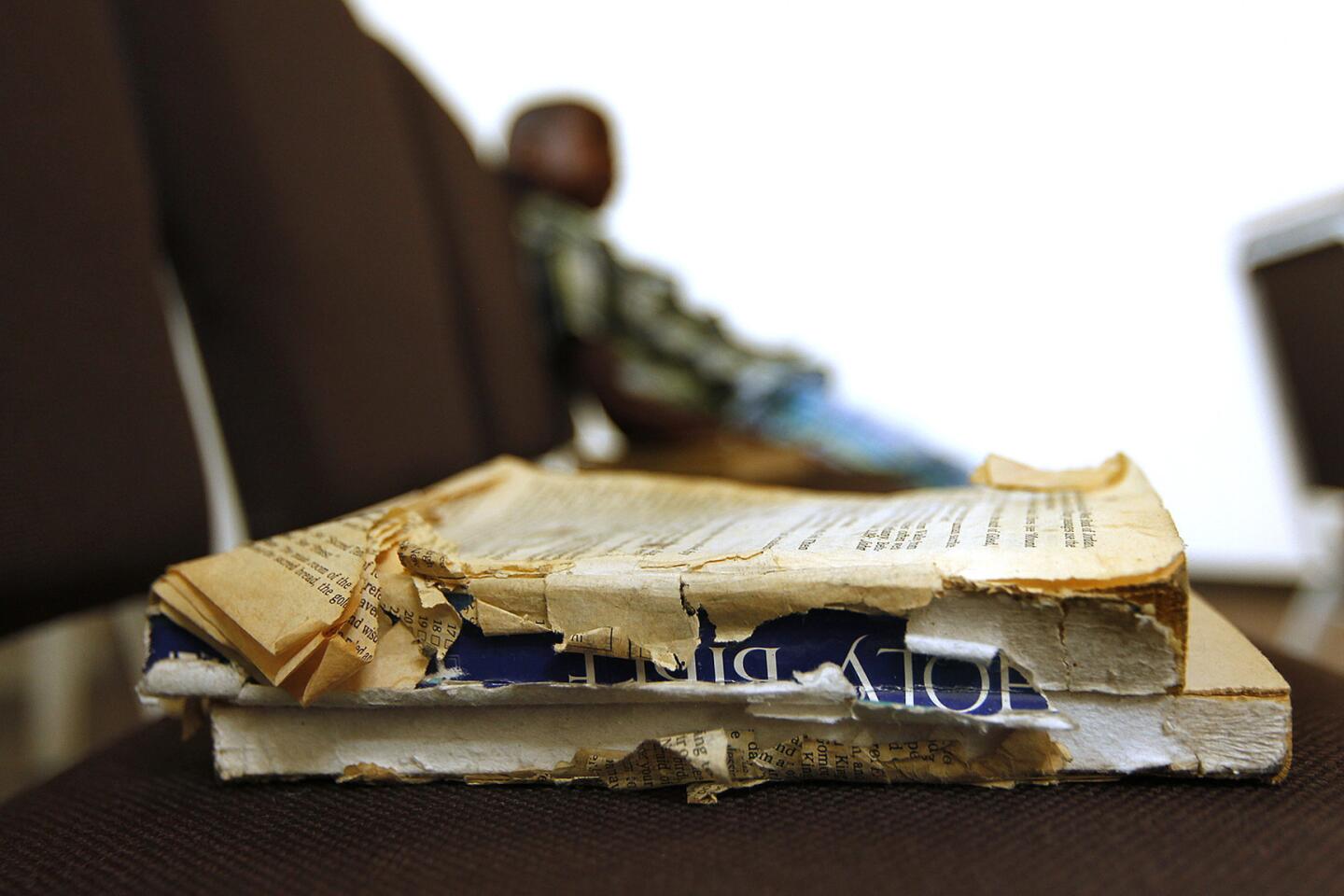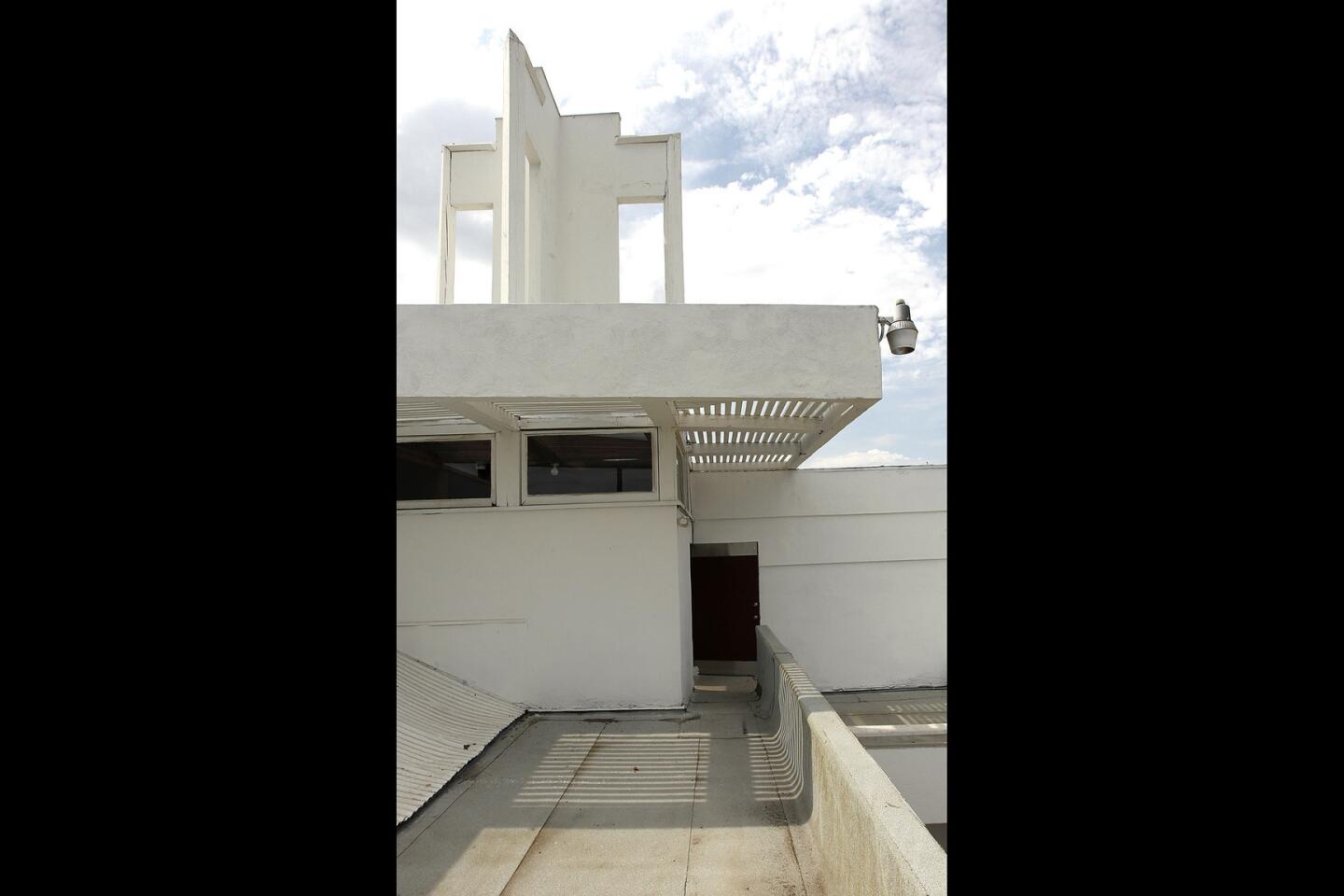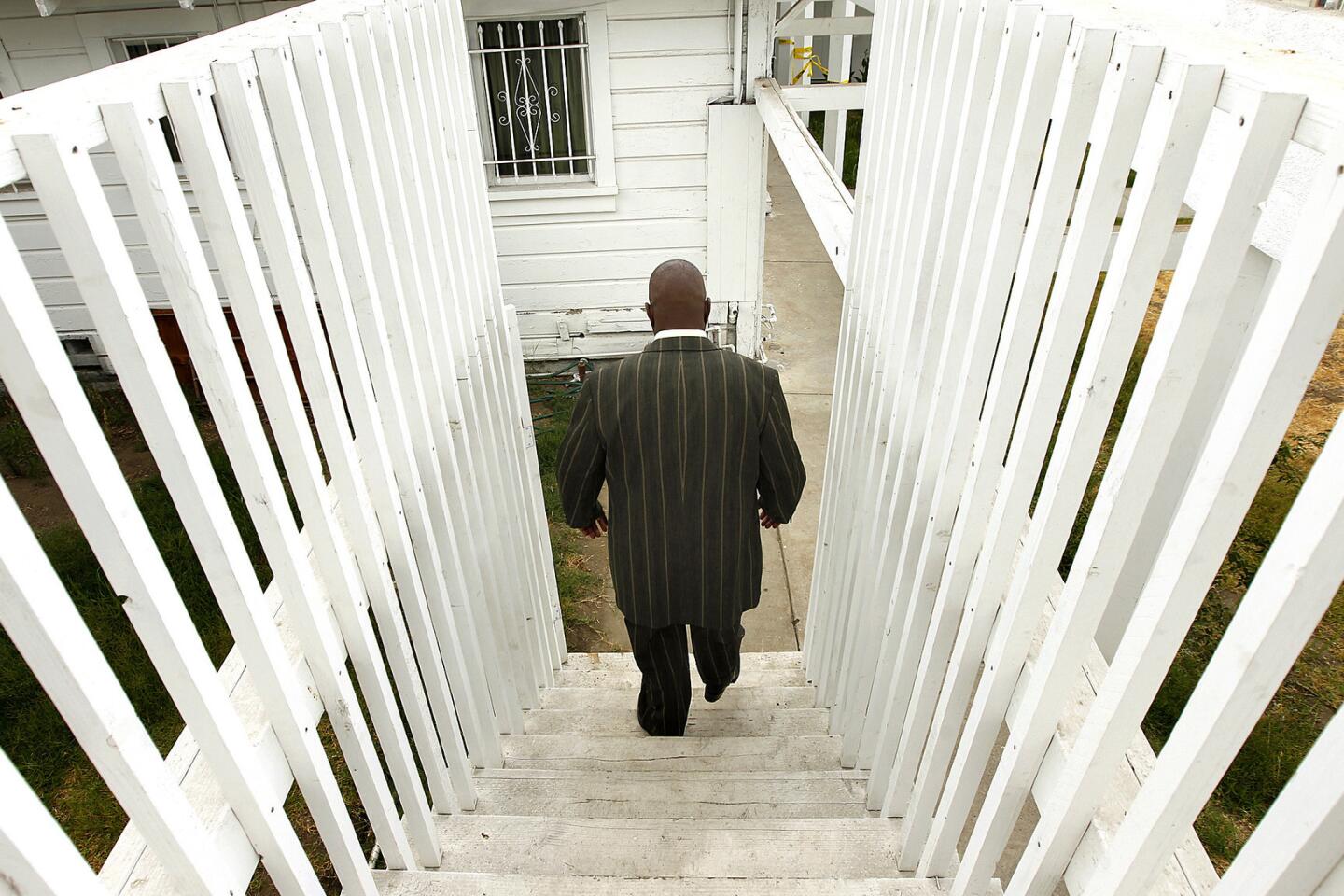Rudolph Schindler-designed Bethlehem Baptist Church regains splendor
- Share via
When the Rev. Melvin Ashley Jr. saw the for sale/lease sign on the side of the dilapidated Bethlehem Baptist Church a year ago, he found the answer to his prayers. At the time, he was searching for a venue where he could house his congregation, Faith-Build International, and extend its social work from Watts to the distressed South Los Angeles neighborhood of Central-Alameda.
What he did not realize was that he had also stumbled on an endangered architectural gem that needed him as much as he needed it. Bethlehem Baptist Church, built in 1944, is the only church designed by Modernist architect Rudolph M. Schindler and one of the few intact Modernist structures in South L.A., according to the Los Angeles Conservancy.
Derelict and graffiti-laden, the structure sat empty for about a decade until Faith-Build International undertook its restoration early this year.
“I didn’t know who Schindler was, the historical value of the church,” Ashley said. “That had nothing to do with me.” What the pastor saw, though, was potential.
Faith-Build International paid the initial $17,500 to lease the property with an option to buy, then began restoring it in February. Every weekend for the next three months, about 20 members of Ashley’s congregation descended on the location, working diligently on the repairs they could manage. It wasn’t easy.
“I took one look at [Bethlehem Baptist], and I wanted to go back to our old church,” Washington Green said. “But that’s why our pastor called our congregation Faith-Build. If we were going to build something, we had to have faith.”
The church members began painting the interiors, tossing out the water-damaged pews and hacking off the overgrown weeds in the yard. Contractors had to be called in to patch the leaking ceiling and restore wiring ripped out by vandals. Faith-Build spent about $50,000 in repairs. Ashley says, “We didn’t realize what we had to do until we got involved.”
The restoration attracted other enthusiasts, such as Brendan Ravenhill, a Los Angeles-based designer who lived in a Schindler home. Ravenhill designed three spare aluminum lighting fixtures with exposed bulbs that echoed Schindler’s preference for simplicity. San Diego architect Steve Wallet volunteered to build awareness of the church by documenting the renovation online and sharing the information with his architecturally inclined circle, seeing it as the only sure way Schindler’s building could survive. “It was allowed to be abandoned because it wasn’t known,” he says. “I want to put it back on everyone’s landscape, so if something happens, someone will know what’s happening.”
All of their labors burnished the forgotten gem with renewed shine. Freshly painted white horizontal bands of stucco form interlocking planes that wrap around the L-shaped church on the corner of Compton Avenue and 49th Street. The three-dimensional cross on the structure declares the building’s religious intentions and also creates the central skylight within. Inside, Schindler’s mastery of space becomes evident. Low ceilings at the entrance open up to a sun-filled space, thanks to ample windows and clerestory lights. A gently downward-sloping floor leads to the pulpit, which branches out to two seating areas at 90-degree angles. Schindler’s sun-drenched design creates an ethereal atmosphere conducive to the solemnity of Sunday services.
Still, more needs to be done. Faith-Build International hopes to restore Schindler’s original color scheme (gray exterior, plum walls and rose-colored flooring), bring back a baptismal pool behind the pulpit and realize some of the architect’s designs for the pews, but first the church needs to purchase the property. It is in negotiations with the owners to determine a fair price.
The restoration has saved a piece of architectural history and bonded congregation members. Every time they attend services, they see not just the work of a Modernist but also a design of their doing. “This is more than a church,” Ashley said. “It’s a beacon of hope for this whole community.”


